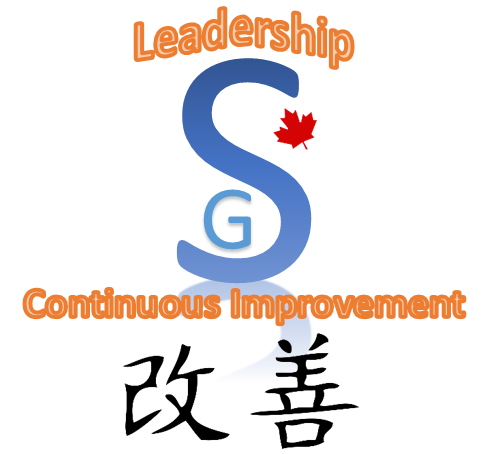Once viewed as a fixed set of qualities, leadership has undergone a remarkable transformation over the years. The traditional characteristic of a leader as a commanding figure, issuing orders from the top down, has given way to a more nuanced and adaptive approach. Today, leadership is recognized as a dynamic process of influence and inspiration, evolving alongside the complexities of modern organizations and the rapidly changing global landscape.
The Shift from Command to Collaboration:
In the past, leadership was often synonymous with authority and control. Leaders were expected to possess all the answers and make decisions unilaterally. However, as organizations became more complex and interconnected, this autocratic leadership style proved ineffective and unsustainable. As a response to this challenge, the shift towards collaboration and empowerment emerged.
Transformational leaders recognize the value of leveraging their teams’ collective intelligence and diverse perspectives. They foster an environment of trust, openness, and collaboration, where ideas are freely exchanged, and individuals are empowered to take ownership of their work. By decentralizing decision-making and embracing participatory leadership practices, organizations can tap into the full potential of their workforce and drive innovation.

Embracing Diversity and Inclusion:
Another significant aspect of leadership transformation is recognizing the importance of diversity and inclusion. In today’s multicultural and interconnected world, leaders must be adept at navigating diverse perspectives, experiences, and backgrounds. Embracing diversity fosters creativity and innovation and enhances organizational resilience and adaptability.
Leadership transformation involves creating an inclusive culture where all voices are heard and valued. It requires leaders to challenge their biases and assumptions, actively seek out diverse viewpoints, and create opportunities for underrepresented groups to thrive. By championing diversity and inclusion, leaders can cultivate a more vibrant and resilient organizational culture that attracts top talent and drives sustainable growth.
Adaptive Leadership in a VUCA World:
The volatile, uncertain, complex, and ambiguous (VUCA) nature of today’s business environment demands a new kind of leadership – one that is agile, adaptive, and resilient. Adaptive leaders excel in navigating uncertainty and ambiguity, embracing change as an opportunity for growth rather than a threat to be avoided.
Adaptive leadership requires leaders to be comfortable with ambiguity, able to make informed decisions in the absence of complete information, and willing to experiment and learn from failure. It involves fostering a culture of continuous learning and adaptation, where individuals are encouraged to embrace change, take calculated risks, and iterate on their approaches.
Tips on Becoming a Transformational Leader
Becoming a transformational leader requires dedication to personal growth, a keen comprehension of organizational dynamics, and the capacity to inspire and empower others. Like any other skill, transformational leadership is learned, not naturally gifted. At HPL, we continue to have leaders ask for insight and advice on how to grow their toolboxes and ways to work on these leadership skills. At the end of the day, it all comes down to practice.
Some key tips or areas of focus to start with if you want to practice your transformational leadership style can be easily summarized with the acronym VISION LEAD:

- Vision Development: As a transformational leader, at any level within an organization, it’s crucial to have a clear and inspiring vision for the future. Take the time to develop a vision statement that outlines your goals, values, and aspirations for your team or organization. Communicate this vision effectively to rally your team behind a common purpose and direction.
- Integrity and Trust: Build trust by acting with integrity and honesty in all your interactions. Be transparent about your intentions, communicate openly, and follow through on your commitments. When team members trust you, they are more likely to be engaged, motivated, and willing to follow your lead.
- Support and Empowerment: Empower your team members by providing them with the support, resources, and autonomy they need to excel. Delegate authority, encourage initiative and provide opportunities for growth and development. Empowering your team unleashes their potential and fosters a culture of ownership and accountability.
- Innovation Encouragement: Foster a culture of innovation by encouraging experimentation, risk-taking, and creative thinking. Create an environment where ideas are valued, and failure is seen as a learning opportunity. Encourage your team to think outside the box, challenge the status quo, and explore new possibilities.
- Inspiration and Motivation: Inspire and motivate your team by leading by example and demonstrating passion, enthusiasm, and commitment. Recognize and celebrate their achievements, and provide encouragement and support during challenging times. By inspiring your team, you ignite their passion and drive for excellence.
- Nurturing Development: Invest in your team members’ development by providing mentorship, feedback, and opportunities for growth. Help them identify their strengths and areas for improvement and provide the support and guidance they need to reach their full potential. By nurturing their development, you build a stronger, more capable team.
- Collaboration Promotion: Promote collaboration and teamwork by breaking down silos and fostering open communication and cooperation across departments and functions. Encourage knowledge sharing, ideas, and best practices, and create opportunities for cross-functional collaboration. By promoting collaboration, you harness your team’s collective intelligence and creativity.
- Embrace Diversity and Inclusion: Recognize the value of diversity and inclusion in driving innovation, creativity, and organizational performance. Create an inclusive environment where all voices are heard and respected and actively seek out diverse perspectives and experiences. By embracing diversity and inclusion, you create a more vibrant and resilient organization.
- Adaptability and Agility: Be agile and adaptable in response to changing circumstances and evolving priorities. Stay open to new ideas and perspectives, and be willing to adjust your approach as needed. By being adaptable and agile, you navigate uncertainty with confidence and resilience, leading your team through change effectively.
- Dynamic Leadership: Embody dynamic leadership qualities by being proactive, visionary, and action-oriented. Lead with energy, enthusiasm, and optimism and inspire your team to achieve greatness. A dynamic leader drives positive change and creates a culture of excellence and innovation.
By following the VISION LEAD framework and embodying these principles, you can become a transformational leader who inspires positive change and drives organizational success.
Where To Start Your Transformational Leadership Journey:

Embarking on the journey of transformational leadership is both an exhilarating and daunting endeavour. It requires a deep commitment to personal growth, a keen understanding of interpersonal dynamics, and the courage to inspire change. As you take your first steps towards becoming a transformational leader, laying a strong foundation for your journey is essential. This begins with self-reflection and a dedication to continuous improvement, followed by cultivating authentic relationships built on trust and mutual respect. Furthermore, articulating a compelling vision that energizes and motivates your team is paramount. In this introductory phase, you set the stage for a transformative leadership experience that will drive organizational success and empower individuals to reach their full potential.
- Self-Reflection and Personal Growth: Start by reflecting on your own leadership style, strengths, and areas for improvement. Engage in self-assessment exercises, seek feedback from peers and mentors, and identify areas where you can grow as a leader. Invest in your personal development through reading books, attending workshops, or enrolling in leadership development programs. You lay the foundation for becoming a transformational leader by focusing on your own growth and development.
- Build Relationships and Foster Trust: Transformational leadership is built on trust, relationships, and effective communication. Invest time in building authentic relationships with your team members, peers, and stakeholders. Listen actively, show empathy, and demonstrate integrity in your interactions. Create a supportive and inclusive work environment where individuals feel valued, respected, and empowered to contribute their best. Building strong relationships and fostering trust creates a solid foundation for transformational leadership.
- Articulate a Compelling Vision: Transformational leaders inspire change by articulating a clear and compelling vision for the future. Take the time to define your vision for your team or organization – where do you want to go, and why does it matter? Communicate this vision effectively to your team, vividly showing the desired future state and rallying them behind a common purpose. Engage your team in co-creating the vision, soliciting their input and buy-in. By articulating a compelling vision, you provide direction and inspiration for your team to embark on the journey of transformational leadership.
Quick Read:
The evolution of leadership from a fixed set of qualities to a dynamic process of influence and inspiration has transformed traditional leadership paradigms. Leaders are now expected to move from the top-down, commanding style towards a collaborative and inclusive approach, recognizing the value of diverse perspectives and experiences. In today’s volatile and uncertain business environment, adaptive leadership has become essential, requiring leaders to navigate ambiguity and embrace change as opportunities for growth. Becoming a transformational leader involves dedication to personal growth, understanding organizational dynamics, and inspiring and empowering others. Key tips for developing transformational leadership skills can be summarized by the acronym VISION LEAD: Vision Development, Integrity and Trust, Support and Empowerment, Innovation Encouragement, Inspiration and Motivation, Nurturing Development, Collaboration Promotion, Embrace Diversity and Inclusion, Adaptability and Agility, and Dynamic Leadership. By embodying these principles, leaders can drive positive change and foster a culture of excellence and innovation within their organizations.
























 a)
a) 